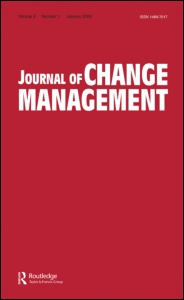Special issue: “With the bad comes what change? The interplay between destructive leadership and organizational change”
08.09.2015

Guest Editors: Pedro Neves (Nova SBE) and Birgit Schyns (Durham University)
A recent book on destructive leadership started by asking the question: “Why does there appear to be an overabundance of abusive, coercive, divisive, and toxic leaders” (Liden, 2010, p. ix). Since then, the study of the ‘dark side’ of leadership has grown exponentially, including themes such as abusive supervision, bossing, destructive, toxic and/or negative leadership, among others (Schyns & Schilling, 2013). A quick glance over this stream of research shows us a solid knowledge base concerning the correlates and consequences for many of these destructive behaviors at the individual, work and organizational levels (but less so on antecedents). However, and although context is as a central element in the enactment of destructive behaviors (Padilla, Hogan & Kaiser, 2007), we still know fairly little about the relationship between these behaviors and contextual influences, namely organizational change (Krasikova, Green & LeBreton, 2013). This is interesting both from a leadership and a followership perspective, as organizational change might interact not only with actual destructive leader behaviors but also with followers’ perception of destructive leadership.
Two reasons highlight the importance of leadership in the context of organizational change: the increased dynamism of the environment, which makes change more frequent, unpredictable and inevitable (Shin, Taylor & Seo, 2012); and the low success rates, with authors arguing that about two thirds of the change efforts fail in achieving their goals (Choi, 2011; Shin et al., 2012). Thus, it appears that one of the main tasks for managers today is the leadership of organizational change (By, 2005). The scarce evidence so far suggests that the context of organizational change, due to its complexity, uncertainty and future orientation is particularly sensitive to destructive behaviors from leaders. For example, a recent study showed that submissive employees, characterized by low core self-evaluations and lack of social support from peers, perceived more abuse from their leaders particularly in recently downsized firms, where their vulnerability is enhanced (Neves, 2014).
Our goal is to contribute to this new stream of research that focuses on the interplay between destructive leadership behavior and organizational change by inviting researchers to submit papers to this special issue of the Journal of Change Management. We would like to encourage submissions that use diverse designs and methods, ranging from theoretical propositions to qualitative and quantitative empirical research.
Possible topics include:
- How does the context of change influence the appearance or enactment of destructive leadership behaviors?
- How do destructive leadership behaviors influence employees’ reactions to change, including resistance, commitment and readiness for change?
- What factors, at the individual, work and organizational levels, may minimize the impact of destructive leadership behaviors during organizational change?
- What factors, at the individual, work and organizational levels, may reduce the appearance of destructive leadership behaviors during organizational change?
- Do destructive leadership behaviors carry the same weight in modeling employee behavior before, during, and after a major organizational change?
- What is the relationship between leader characteristics and destructive behaviors in contexts charged with uncertainty, such as organizational change?
- In this particular context, what is the role of follower characteristics in the enactment of destructive behaviors?
References:
By, R.T. (2005). Organisational change management: A critical review. Journal of Change Management, 5: 369-380.
Choi, M. (2011). Employees’ attitudes toward organizational change: a literature review. Human Resource Management, 50: 479-500.
Krasikova, D.V., Green, S.G., & LeBreton, J. (2013). Destructive leadership: A theoretical review, integration, and future research agenda. Journal of Management, 39: 1308-1338.
Liden, R. (2010). Preface. In B. Schyns and T. Hasnbrough (Eds.), When leadership goes wrong: Destructive leadership, mistakes, and ethical failures (pp. ix-xii). Charlotte, NC: Information Age Publishing.
Neves, P. (2014). Taking it out on survivors: Submissive employees, downsizing, and abusive supervision. Journal of Occupational and Organizational Psychology, 87: 507-534.
Padilla, A., Hogan, R., Kaiser, R.B. (2007). The toxic triangle: Destructive leaders, susceptible followers, and conducive environments. The Leadership Quarterly, 18: 176-194.
Schyns, B., & Schilling, J. (2013). How bad are the effects of bad leaders? A meta-analysis of destructive leadership and its outcomes. The Leadership Quarterly, 24: 138-158.
Shin, J., Taylor, M., & Seo, M. (2012). Resources for change: The relationships of organizational inducements and psychological resilience to employees’ attitudes and behaviors toward organizational change. Academy of Management Journal, 55: 727-748.
Submission Process
Papers (6000-8500 words) should be submitted as an email attachment with the subject heading “JCM Special Issue – Destructive Leadership and Change” to both guest editors at pneves@novasbe.pt and birgit.schyns@durham.ac.uk. Submissions should follow the general guidelines of the Journal of Change Management (http://www.tandf.co.uk/journals/rjcm).
Refereeing and the selection of papers will be conducted according to the journal’s normal procedures (double-blind review). Submitted papers should not have been previously published nor be currently under consideration for publication elsewhere. For further information contact the guest editors.
Submissions due: 31 January 2016 Expected date of publication: 2017

